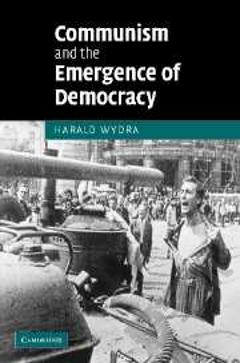Economic Origins of Dictatorship and Democracy
Part I. Questions and Answers Section 1. Paths of Political Development: 1. Britain 2. Argentina 3. Singapore 4. South Africa, 5. The agenda Section 2. Our Argument: 1. Democracy vs. nondemocracy 2. Building blocks of our approach 3. Towards our basic story 4. Our theory of democratization 5. Democratic consolidation 6. Determinants of democracy 7. Political identities and the nature of conflict 8. Democracy in a picture 9. Overview of the book Section 3. What Do We Know About Democracy?: 1. Measuring democracy 2. Patterns of democracy 3. Democracy, inequality and redistribution 4. Crises and democracy 5. Social unrest and democratization 6. The literature 7. Our contribution Part II. Modelling Politics Section 4. Democratic Politics: 1. Introduction 2. Aggregating individual preferences 3. Single-peaked preferences and the median voter theorem 4. Our workhorse models 5. Democracy and political equality 6. Conclusion Section 5. Nondemocratic Politics: 1. Introduction 2. Power and constraints in nondemocratic politics 3. Modeling preferences and constraints in nondemocracies 4. Commitment problems 5. A simple game of promises 6. A dynamic model 7. Incentive compatible promises 8. Conclusion Part III. The Creation and Consolidation of Democracy Section 6. Democratization: 1. Introduction 2. The role of political institutions 3. Preferences over political institutions 4. Political power and institutions 5. A 'static' model of democratization 6. Democratization or repression? 7. A dynamic model of democratization 8. Subgame perfect equilibria 9. Alternative political identities 10. Targeted transfers 11. Power of the elite in democracy 12. Ideological preferences over regimes 13. Democratization in pictures 14. Equilibrium revolutions 15. Conclusion Section 7. Coups and Consolidation: 1. Introduction 2. Incentives for coups 3. A static model of coups 4. A dynamic model of the creation and consolidation of democracy 5. Alternative political identities 6. Targeted transfers 7. Power in democracy and coups 8. Consolidation in a picture 9. Defensive coups 10. Conclusion Part IV. Putting the Models to Work Section 8. The Role of the Middle Class: 1. Introduction 2. The three-class model 3. Emergence of partial democracy 4. From partial to full democracy 5. Repression: the middle class as a buffer 6. Repression: soft-liners vs. hard-liners 7. The role of the middle class in consolidating democracy 8. Conclusion Section 9. Economic Structure and Democracy: 1. Introduction 2. Economic structure and income distribution 3. Political conflict 4. Capital, land and the transition to democracy 5. Financial integration 6. Increased political integration 7. Alternative assumptions about the nature of international trade. 8. Conclusion Part V. Conclusion and The Future of Democracy Section 10. Conclusion and the Future of Democracy: 1. Paths of political development revisited 2. Extension and areas for future research 3. The future of democracy Part VI. Appendix Section 11. Appendix to Section 4: The Distribution of Power in Democracy: 1. Introduction 2. Probabilistic voting models 3. Lobbying 4. Partisan politics and political capture.
{{comment.content}}








 京公网安备 11010802027623号
京公网安备 11010802027623号